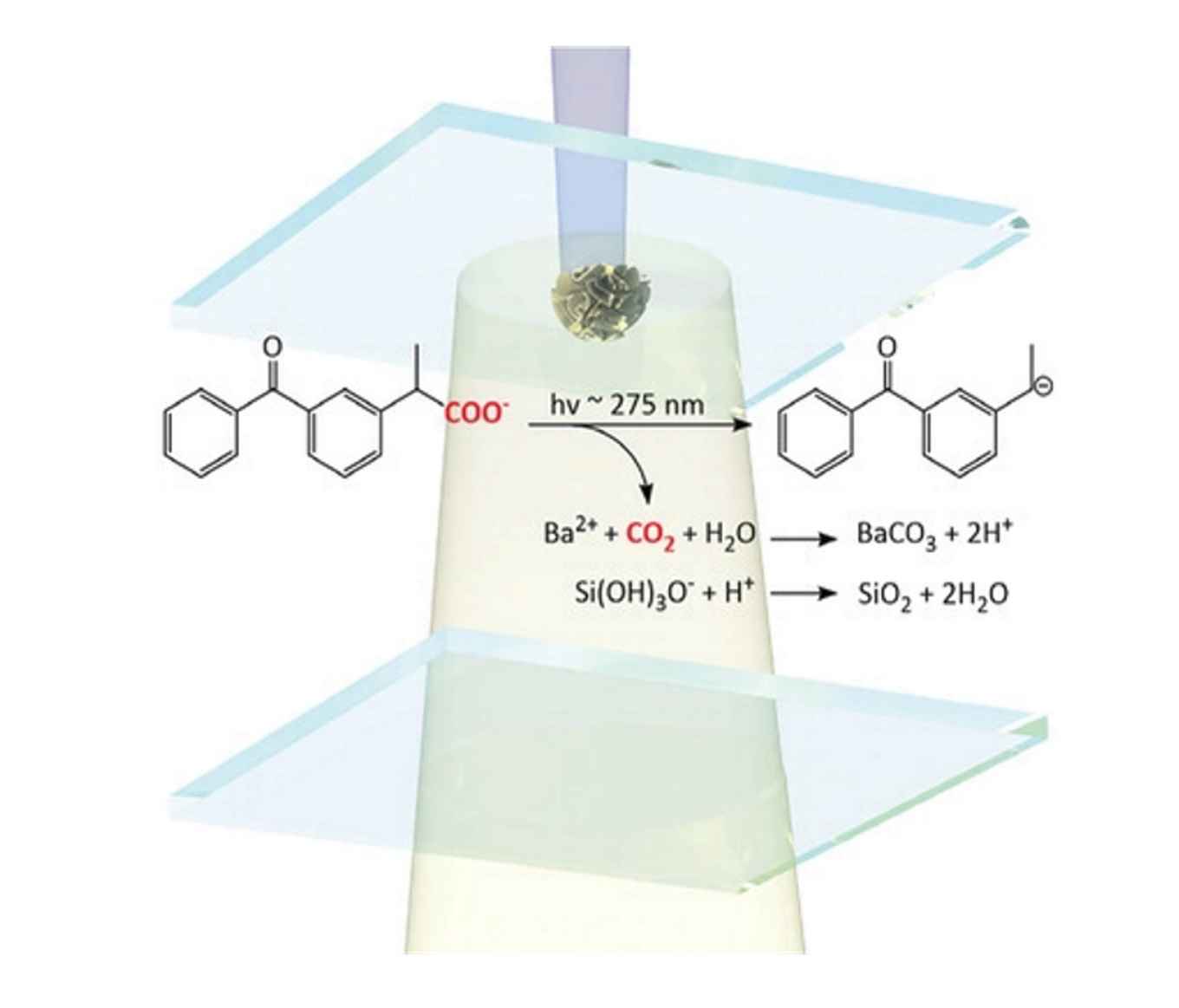Controlled nucleation and shaping of self-assembling nanocomposites using light
20 December 2021

For several years, the Noorduin group has produced beautiful crystal structures at the nanoscale that range from corals and vases to helices. These structures form spontaneously from various chemicals in a self-assembly process. Research at the group is aimed at understanding and controlling the process that according to Noorduin still contains a form of chaos. "It remains a spontaneous process that we would like to gain more control over,” he says in an AMOLF press release. The research of Marloes Bistervels has now shown that light is highly suitable to achieve this control.
Abstract
Controlling self-assembly of nanocomposites is a fundamental challenge with exciting implications for next-generation advanced functional materials. Precursors for composites can be generated photochemically, but limited insight in the underlying processes has hindered precise hands-on guidance. In this study, light-controlled nucleation and growth is demonstrated for self-assembling composites according to precise user-defined designs. Carbonate is generated photochemically with UV light to steer the precipitation of nanocomposites of barium carbonate nanocrystals and amorphous silica (BaCO3/SiO2).
Using a custom-built optical setup, the self-assembly process is controlled by optimizing the photogeneration, diffusion, reaction, and precipitation of the carbonate species, using the radius and intensity of the UV-light irradiated area and reaction temperature. Exploiting this control, nucleation is induced and the contours and individual features of the growing composite are sculpted according to micrometer-defined light patterns.
Moreover, moving light patterns are exploited to create a constant carbonate concentration at the growth front to draw lines of nanocomposites with constant width over millimeters with micrometer precision. Light-directed generation of local gradients opens previously unimaginable opportunities for guiding self-assembly into functional materials.
Publication details
Marloes H. Bistervels, Marko Kamp, Hinco Schoenmakers, Albert M. Brouwer and Willem L. Noorduin, Light-controlled nucleation and shaping of self-assembling nanocomposites, Advanced Materials (2021), doi.org/10.1002/adma.202107843
Links
- Noorduin research group
- Wim Noorduin appointed professor by special appointment of Self-Organising Matter
- UvA and AMOLF researchers work together towards CO2 valorisation